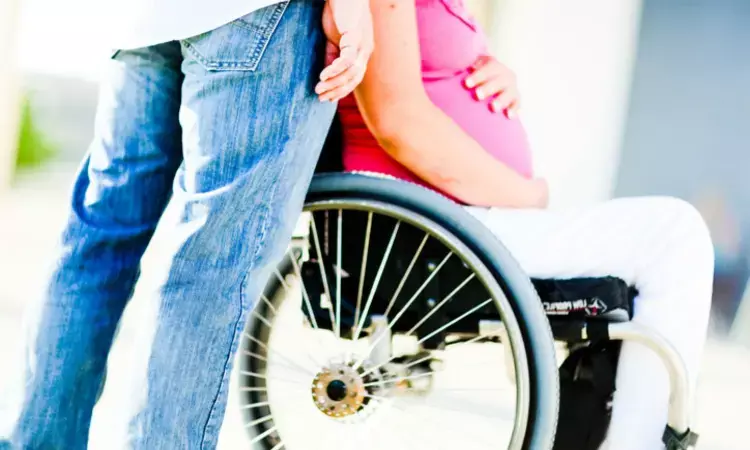- Home
- Medical news & Guidelines
- Anesthesiology
- Cardiology and CTVS
- Critical Care
- Dentistry
- Dermatology
- Diabetes and Endocrinology
- ENT
- Gastroenterology
- Medicine
- Nephrology
- Neurology
- Obstretics-Gynaecology
- Oncology
- Ophthalmology
- Orthopaedics
- Pediatrics-Neonatology
- Psychiatry
- Pulmonology
- Radiology
- Surgery
- Urology
- Laboratory Medicine
- Diet
- Nursing
- Paramedical
- Physiotherapy
- Health news
- Fact Check
- Bone Health Fact Check
- Brain Health Fact Check
- Cancer Related Fact Check
- Child Care Fact Check
- Dental and oral health fact check
- Diabetes and metabolic health fact check
- Diet and Nutrition Fact Check
- Eye and ENT Care Fact Check
- Fitness fact check
- Gut health fact check
- Heart health fact check
- Kidney health fact check
- Medical education fact check
- Men's health fact check
- Respiratory fact check
- Skin and hair care fact check
- Vaccine and Immunization fact check
- Women's health fact check
- AYUSH
- State News
- Andaman and Nicobar Islands
- Andhra Pradesh
- Arunachal Pradesh
- Assam
- Bihar
- Chandigarh
- Chattisgarh
- Dadra and Nagar Haveli
- Daman and Diu
- Delhi
- Goa
- Gujarat
- Haryana
- Himachal Pradesh
- Jammu & Kashmir
- Jharkhand
- Karnataka
- Kerala
- Ladakh
- Lakshadweep
- Madhya Pradesh
- Maharashtra
- Manipur
- Meghalaya
- Mizoram
- Nagaland
- Odisha
- Puducherry
- Punjab
- Rajasthan
- Sikkim
- Tamil Nadu
- Telangana
- Tripura
- Uttar Pradesh
- Uttrakhand
- West Bengal
- Medical Education
- Industry
Pregnant Women with Disability at Higher Risk of Adverse Maternal and Neonatal Outcomes: Study

USA: Researchers have found in a new study published in the Journal of American Medical Association that pregnant women with disabilities face a higher risk of adverse maternal and neonatal outcomes compared to those without disabilities.
"Different methods of identifying disability—diagnostic codes and disability benefits—captured overlapping but distinct groups. Using both approaches together proved to be the most comprehensive way to identify births among women with disabilities," the researchers wrote.
Pregnant women with disabilities face a higher risk of poor pregnancy and birth outcomes, and the method used to identify disability may influence estimates of health disparities in this population. Alka Dev, The Dartmouth Institute for Health Policy and Clinical Practice, Geisel School of Medicine at Dartmouth, Hanover, New Hampshire, and colleagues aimed to compare pregnancy and birth outcomes based on different approaches to defining maternal disability, providing insights into the impact of identification methods on health assessments.
For this purpose, the researchers conducted a retrospective cohort study using linked vital records and maternal-newborn claims for Medicaid-insured live births in Texas (2010–2014), analyzing data from October 2023 to May 2024. Births were categorized into five maternal disability groups based on benefits enrollment and diagnostic codes. Outcomes included cesarean delivery, severe maternal morbidity, low birthweight, preterm birth, and small for gestational age.
Adjusted risk ratios were estimated using modified Poisson regression with robust variance estimators to assess associations between disability status and these outcomes, highlighting the impact of different disability identification methods on maternal and neonatal health.
Key Findings:
• The study included 921,218 births, with a mean maternal age of 25.1 years.
• Most births (97.2%) were to mothers without disabilities, while 2.8% met at least one disability definition.
• Mothers with only a disability diagnostic code had the highest rates of:
• Cesarean delivery (43.2% versus 34.3% in non-disabled mothers).
• Low birthweight (14.2% versus 8.4%).
• Preterm birth (15.9% versus 10.4%).
• Adjusted risks were highest in the diagnostic code-only group for:
• Cesarean delivery (aRR 1.22).
• Low birth weight (aRR 1.77).
• Preterm birth (aRR 1.68).
• Severe maternal morbidity (aRR 4.82) and small for gestational age (aRR 1.43) risks were highest in mothers with both benefits enrollment and a diagnostic code.
This study highlights that pregnant women with disabilities face a higher risk of adverse maternal and neonatal outcomes, regardless of how disability is defined. However, the extent of these disparities varies based on the method of disability identification. Diagnostic codes and disability benefits enrollment captured different groups, with some overlap. Using both approaches together provided a more comprehensive identification of births to women with disabilities.
"These findings emphasize the need to consider how disability is defined when assessing health risks to ensure a more accurate understanding of associated pregnancy and birth outcomes," the authors concluded.
Reference:
Dev A, Horner-Johnson W, Schaefer A, et al. Identifying Pregnant Women With Disabilities and Maternal and Newborn Outcomes. JAMA Netw Open. 2025;8(3):e252159. doi:10.1001/jamanetworkopen.2025.2159
Dr Kamal Kant Kohli-MBBS, DTCD- a chest specialist with more than 30 years of practice and a flair for writing clinical articles, Dr Kamal Kant Kohli joined Medical Dialogues as a Chief Editor of Medical News. Besides writing articles, as an editor, he proofreads and verifies all the medical content published on Medical Dialogues including those coming from journals, studies,medical conferences,guidelines etc. Email: drkohli@medicaldialogues.in. Contact no. 011-43720751


